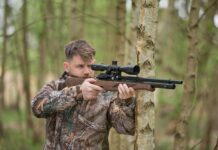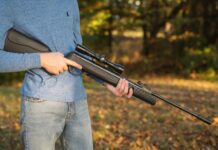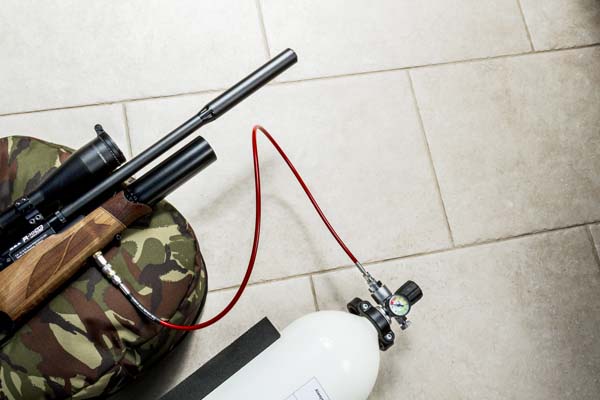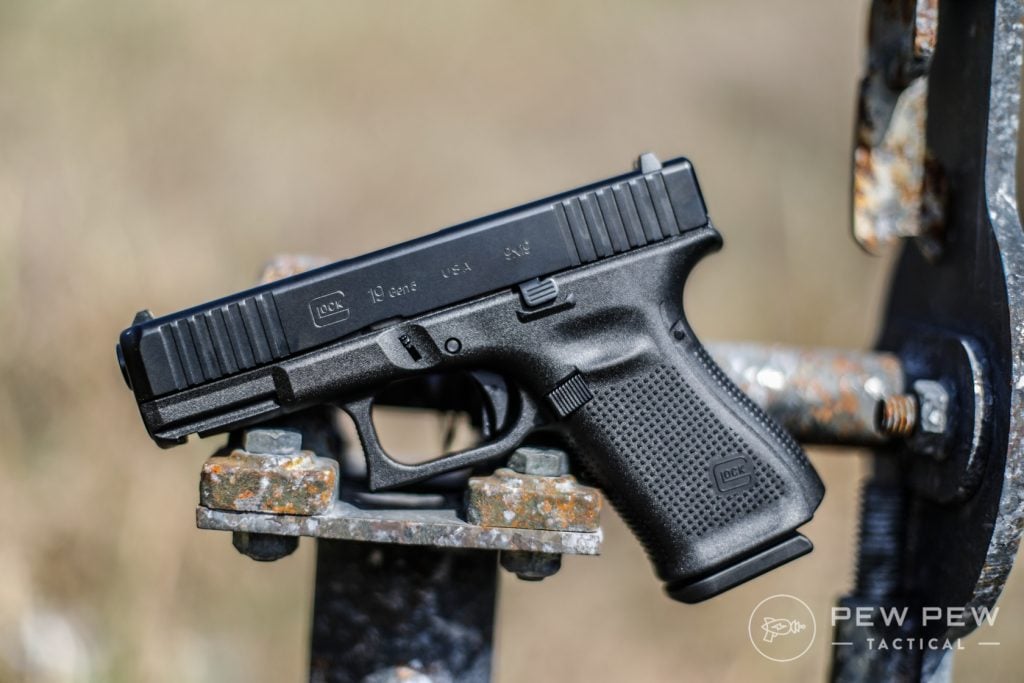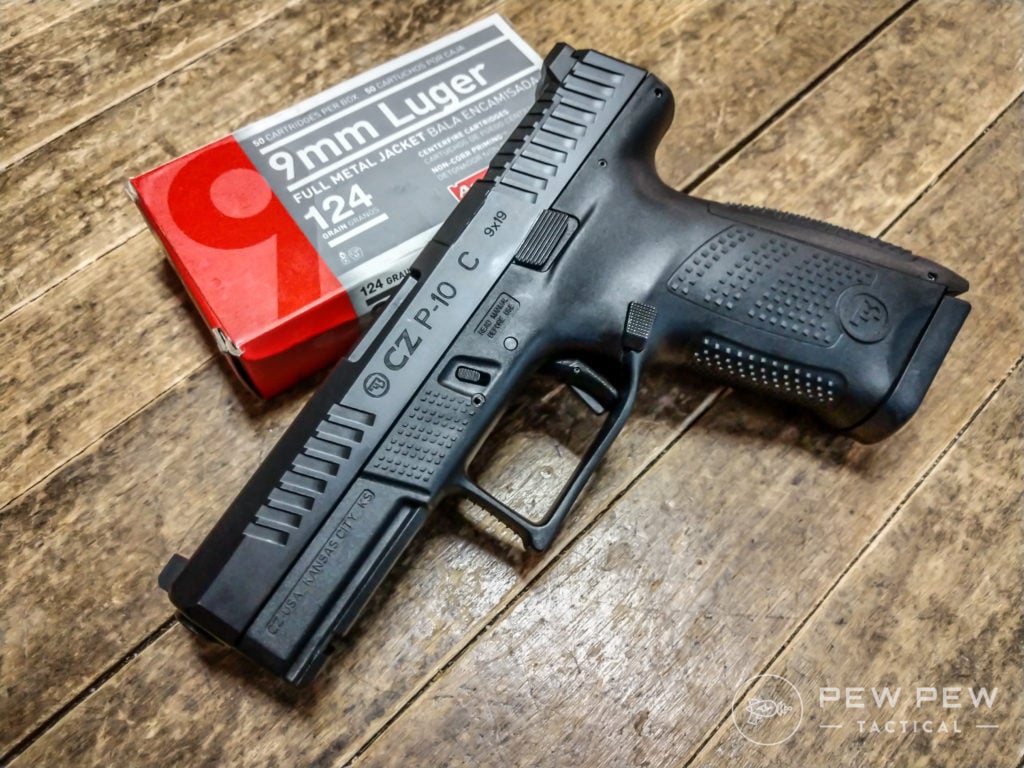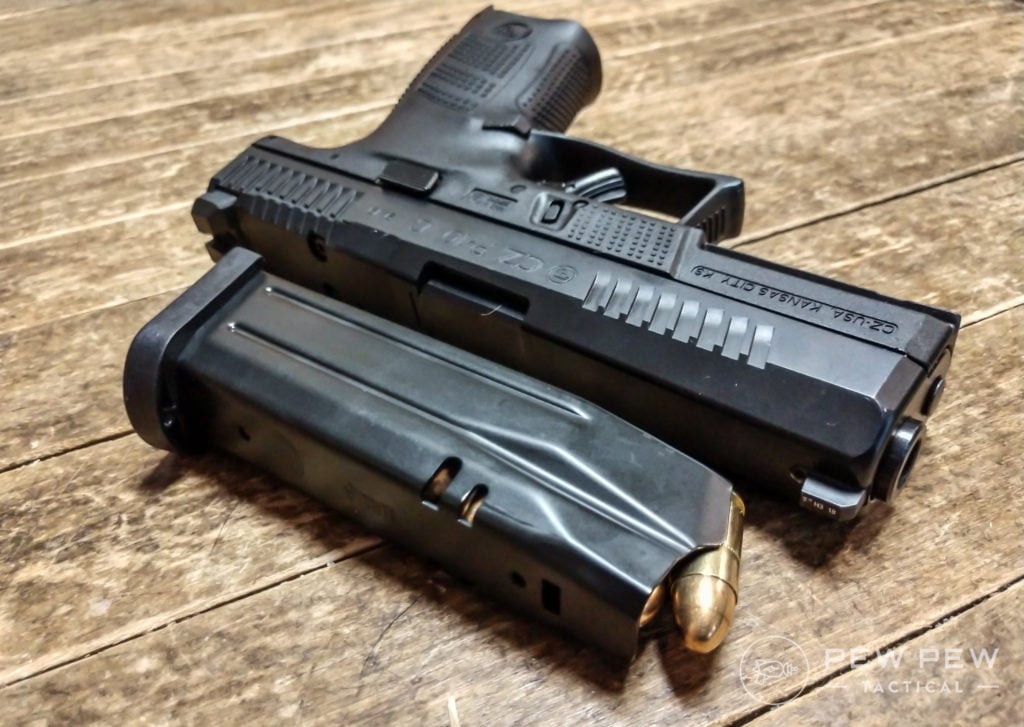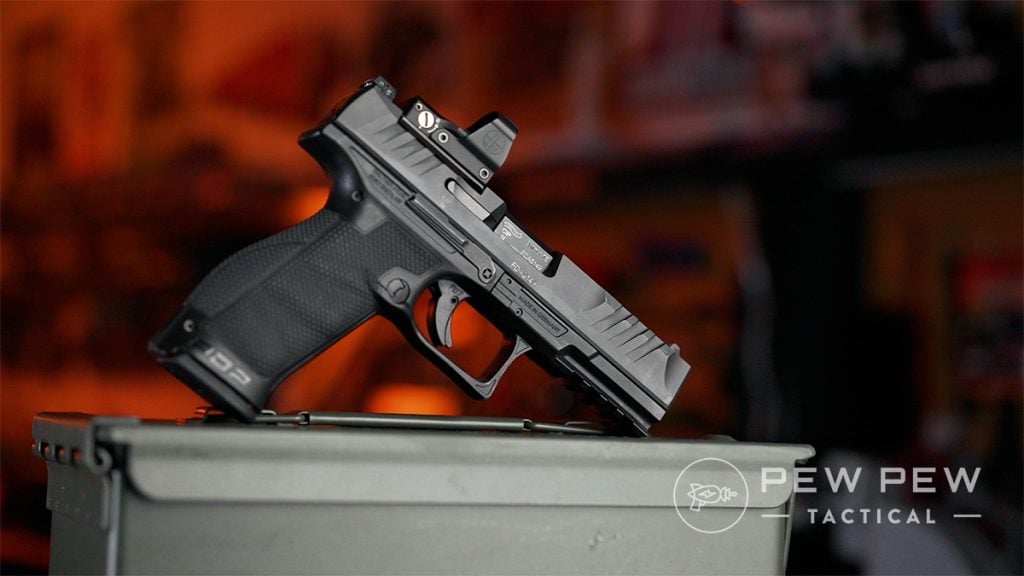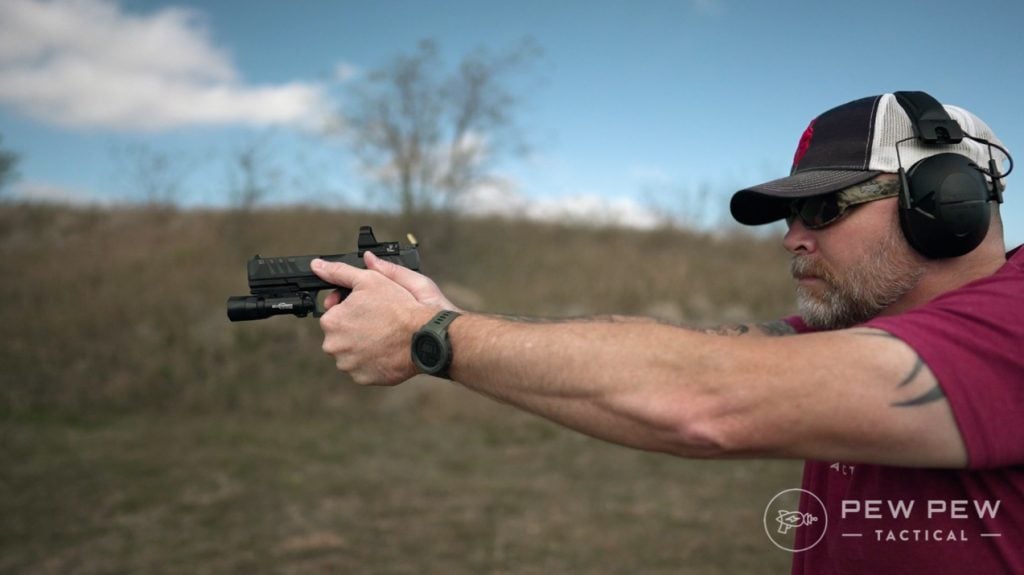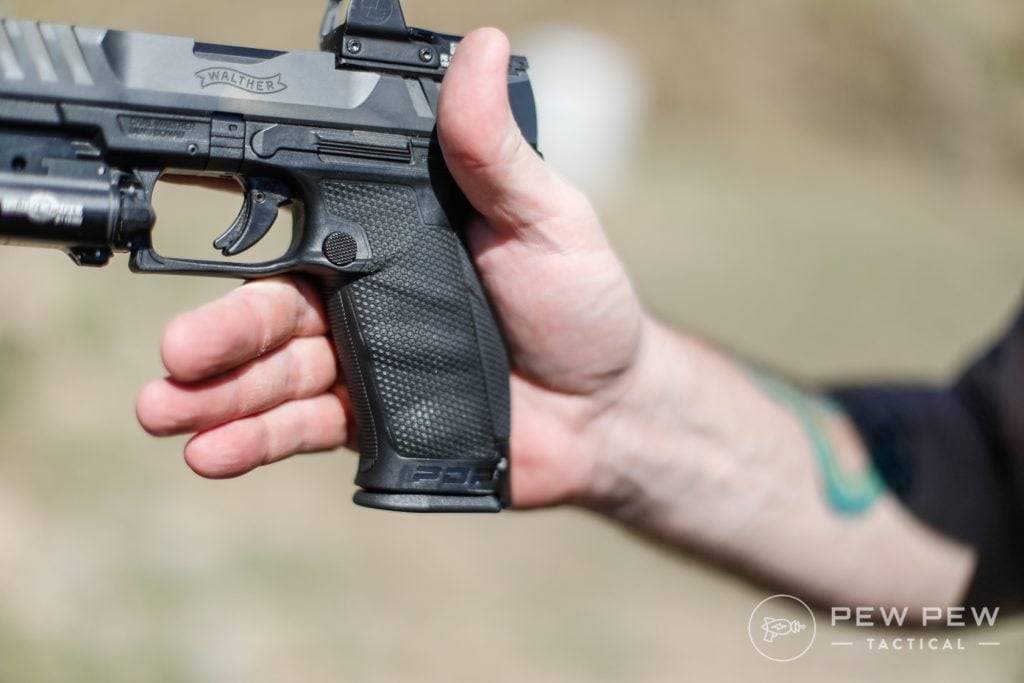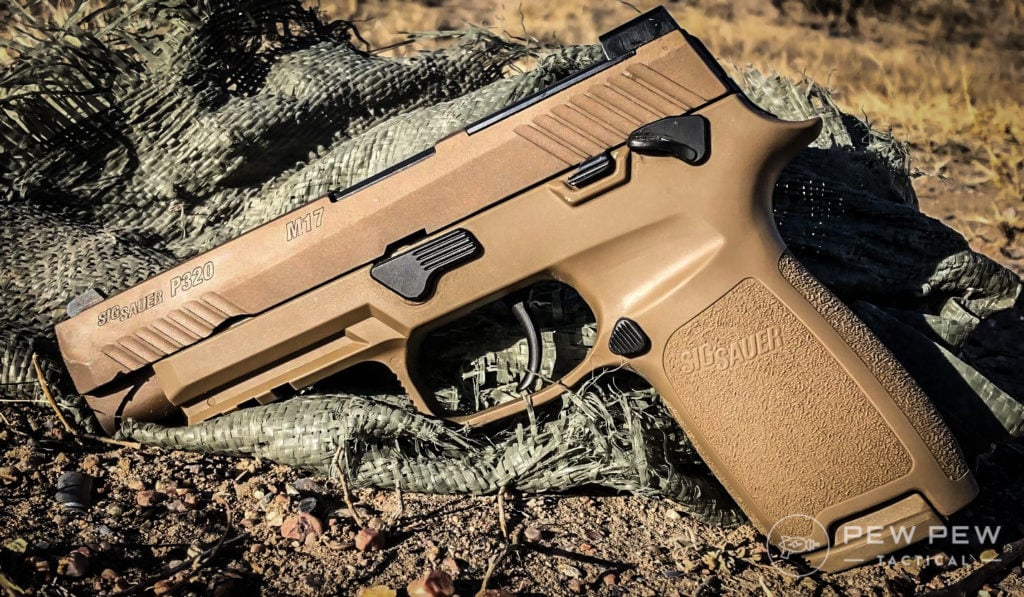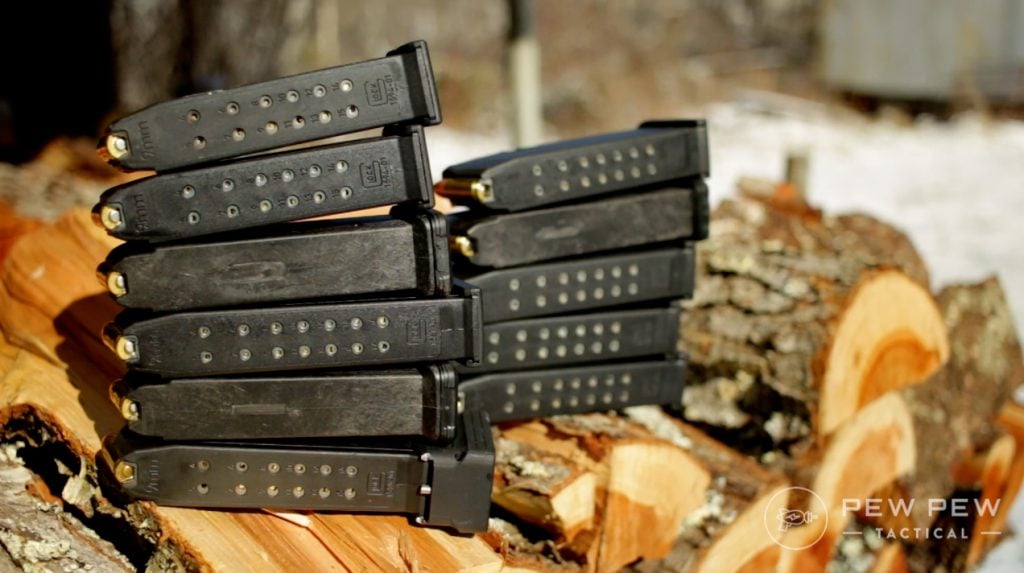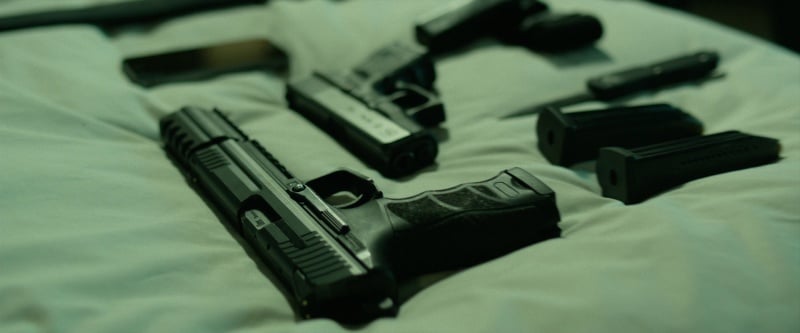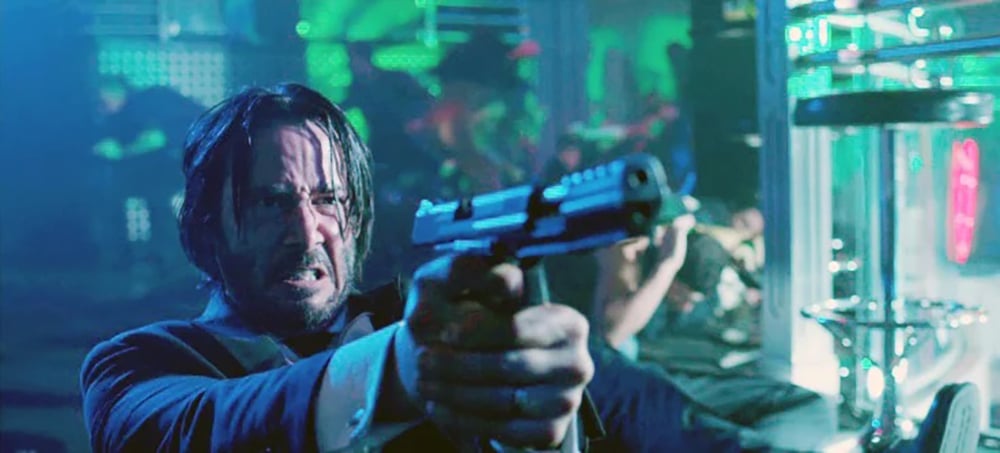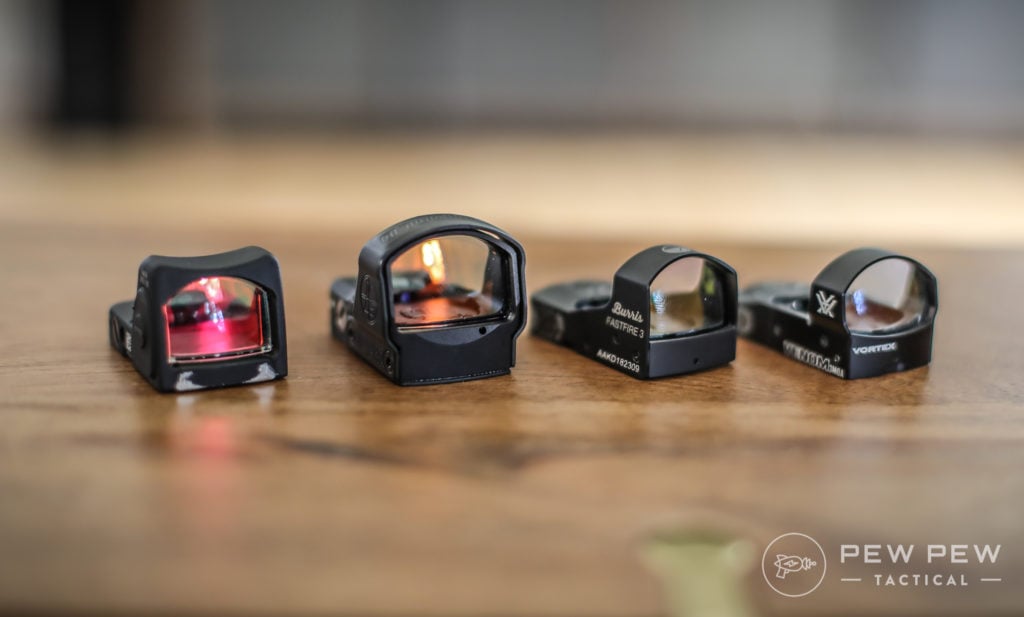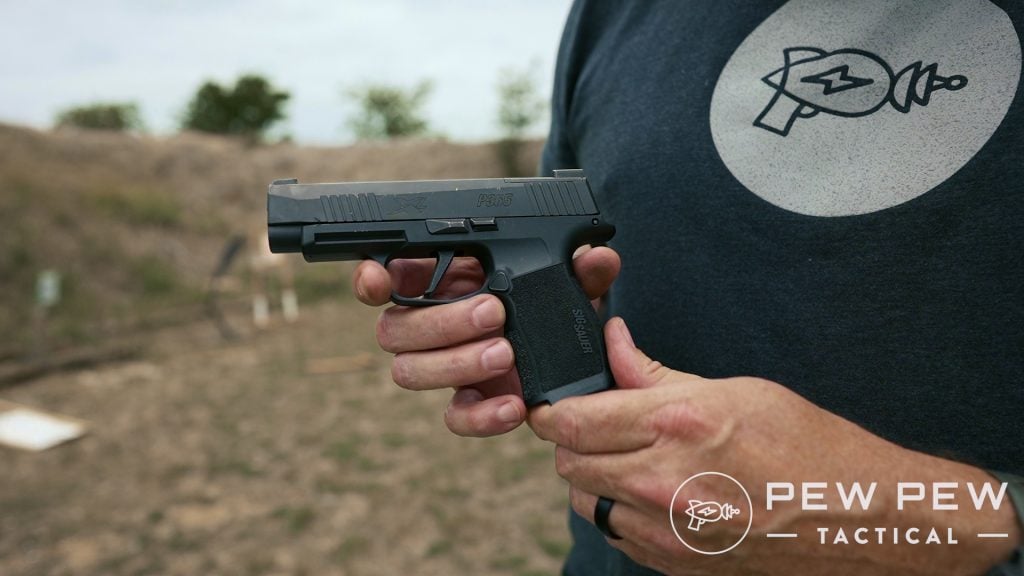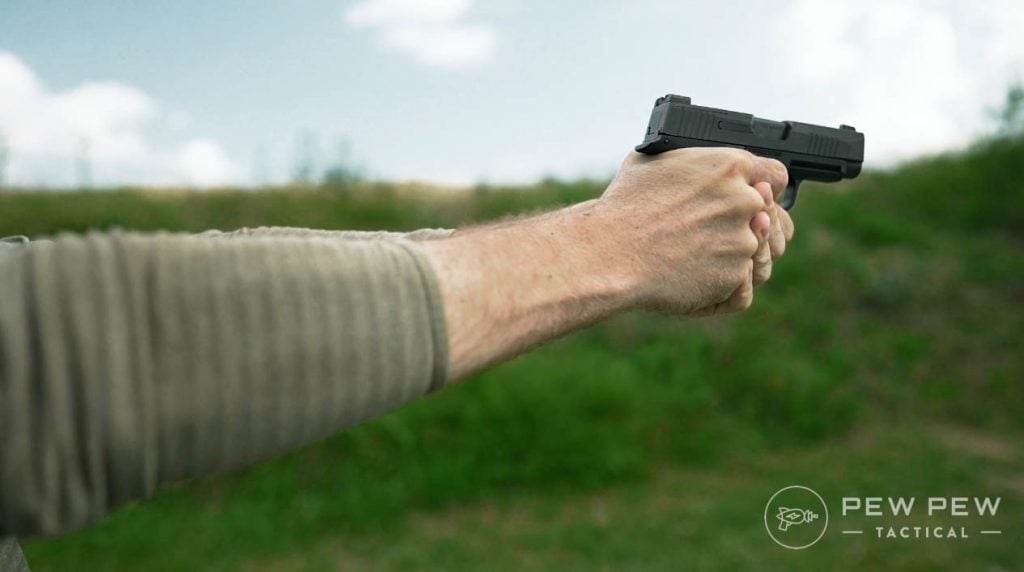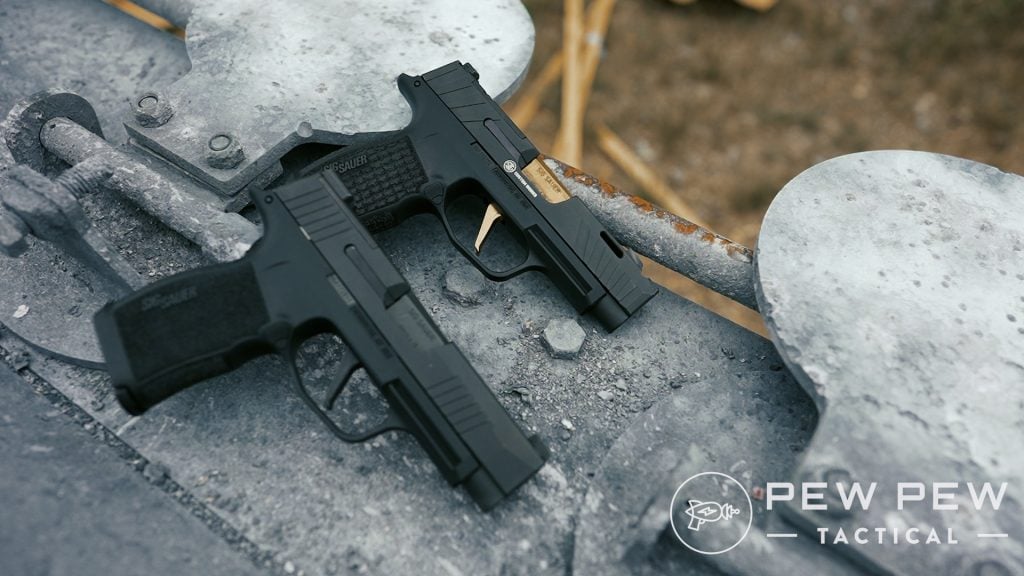Today I’m going to show you the best Vortex red dot sight.
In fact:
I’ve hand-tested over 10 scopes alone for this review.
The best part?
I’ve sorted the scopes by use. So whether you’re on a budget or need the best Vortex red dot, you’ll find it here.
Let’s dive in!
Vortex Spitfire AR Prism Scope
Vortex Crossfire Red Dot Sight
Vortex Viper Red Dot
Vortex Razor Red Dot
Table of Contents
Red Dots vs Holographic Sights
Just quickly, what’s the difference between red dot sights and holographic sights? And which is better?
Holographic sights, or holographic optics, use a laser to project a reticle onto a glass plate. The dot is then reflected up to your eye. Vortex makes a great holographic sight, the Vortex Razor AMG UH-1.
In red dot sight models, the reticle is projected directly onto the front lens. The lens is coated with a special material that allows it to display a crisp red dot on your target.
Holographic sights may have an advantage over red dot sights in durability and weight, but if you’re looking for something lightweight and easy to use, you may want to consider getting the best red dot sight for your needs instead.
How to Choose a Red Dot Sight
A red dot sight is a type of weapon sight that uses a red dot projected onto a crosshair, creating a sighting method in which the operator looks through the scope and aims at an object. Originally developed for use in military applications, they have become popular among hunters and recreational shooters. Many red dot sights can be mounted on pistols or rifles alike to give users quick access to their weapons while preserving accuracy. There are several different types of red dot sights such as holographic and laser sights.
But what do you look for when buying a red dot sight? The first thing you need to consider is price. If you want a red dot to have a lot of magnification, but also have a good field of view, high zoom optics are recommended. In addition these sights may have other features such as illuminated reticle locations and night vision lasers. High-end optics for red dot sights can cost anywhere from $400 to $1000 or more.
Next to look into is the brightness level of the sight itself. If you don’t plan on using it in dim light environments, then a brighter sight will be fine for your needs. However, if you’re planning on shooting in dim light sometimes, then low intensity sights are preferred by many people including hunters and shooters alike. The third thing to look for is user-friendly features such as a quick-release mount and an adjustable reticle. And lastly, the type of red dot sight you decide to buy should match your needs. For example, if you want a compact and lightweight red dot sight with a small magnification range, then an auto tracking optic (ATO) may be more suitable for you. On the other hand, if your needs are more specific and require a longer range with higher magnification than you may want to go with an illuminated red dot sight that has different types of reticles such as mil dots or crosshairs.
Regardless of your needs it is best to choose a red dot sight that matches your specific needs and goals. You can go out and try different types of red dot sights with the hopes of finding the perfect one for you, but don’t expect to find something perfect. The chances are most people will not be able to find their exact needs in one purchase, and each type of red dot sight will have different capabilities and limitations based on its size and magnification.
The good news is I already did all the research for you and found the best red dot sights made by Vortex. Let’s take a look…
The Best Vortex Red Dot Sights of 2021
If you’re pressed on time, here’s a quick list of the best Vortex red dots:
- Vortex Spitfire AR Prism Scope: Best Vortex Red Dot for AR-15
- Vortex Crossfire: Best for the Budget
- Vortex Viper: Best Red Dot for Glock
- Vortex Razor: Most Premium
1. Vortex Spitfire AR Prism Scope: Best Vortex Red Dot for AR-15
The Spitfire AR Prism Scope offers all the features of Vortex’s best red dot sight on an AR-15 platform. It may not be the Vortex Strike Eagle, but it’s the best red dot around. If you shoot AR-15’s, this is absolutely the sight you need.
Let’s dive into the features!
Glass Clarity & Reticle
The AR Prism Scope is constructed from glass lenses with anti-reflective coatings, providing a crystal clear sight picture with 100% field of view.
The design of this sight is also great for people with astigmatism. You won’t see anything through the lens that you shouldn’t. When working with AR-15’s, this is key when you’re trying to fire off quick, extremely accurate shots.

Probably one of the cooler features of this sight is the etched DRT (Dual Ring Tactical) MOA reticle. It’s perfect for quick and accurate close-range firing.
The prism design on this red dot allows you to see the reticle with or without illumination, which is handy in case the battery dies. However, the reticle does have twelve different intensity levels so you can choose the perfect illumination for the surrounding conditions.

Eye Relief & Eye Box
The Vortex Spitfire AR Prism Scope allows for a large eye relief, which is great for shooters who wear glasses or protective eyewear.
Additionally, the eye box is wide enough to provide ample viewing space for shooters.

Durability
Like a lot of other Vortex sights and scopes, the Vortex Spitfire AR Prism Scope is shockproof, waterproof, and fog-proof. If you do a lot of shooting competitions, this red dot might have to be your go-to. It’s compact, resistant to corrosion, mounts squarely and soundly, and can withstand severe weather conditions.
Elevation & Windage Knobs
The bold turrets allow the shooter to make adjustments quickly and accurately. The zero-reset feature allows you to re-zero the rifle without having to re-shoot the target at 100 yards after each adjustment. Combine these two features with the fast-focus eyepiece, you can make quick shots without having to fumble around with your sight.

What’s really special about the Vortex Spitfire AR Prism Scope is the 5.56 BDC turret with settings for AR-15s up to 700 yards! This feature can only be found on the Spitfire.
Parallax & Magnification
The Spitfire AR Prism is parallax-free with a magnification of 1x. These settings are great for ARs.

Mounting Options & Included Accessories
The Vortex Spitfire AR Prism Scope comes with a collapsible mount, which can be adjusted for height or can’t easily. It allows the shooter to quickly swap between magnified (magnifier) and red dot (1x) optic. It also comes with an integrated 11-slot Picatinny rail for mounting additional accessories like lasers, flashlights, or bipods.
Summary
The Vortex Spitfire AR Prism Scope is a great alternative to the ACOG or Aimpoint PRO. It offers an easy-to-use, rugged, and lightweight red dot optic that is widely compatible with most AR platforms.

Furthermore, it provides a reticle that is open enough to accurately hold at all times, which means you won’t have to constantly re-zero your rifle. The Vortex Spitfire AR Prism Scope also comes with a high-quality lower 1/3 co-witness mount type.
If the Spitfire is a little too outside of your price range, the SPARC AR and SPARC II are less expensive, comparable alternatives by Vortex. Or, perhaps you want to check out another quality brand, like Sig Sauer Romeo 5.
All in all, the Spitfire AR Prism Scope has earned its place as one of Vortex’s best red dot sights.
2. Vortex Crossfire Red Dot Sight: Best for the Budget
I can’t stress enough how good of a value the Vortex Crossfire red dot is. When you compare the cost to the features you’re getting, it really is an unbeatable deal.
I’ve tested countless red dots in my day, and this one definitely gives the most bang for its buck.
It really is perfect for someone who simply needs an affordable option without giving up much in return.
Enough chatter, let’s see what makes the Crossfire so great!
Glass Clarity & Reticle
The glass is crystal clear. In comparison to other reflex sights, the glass is much better.

It’s made from an anti-reflective material that will not wear off over time or damage the sight’s reticle clarity in any way.
The reticle is crisp and precise. It’s also an illuminated reticle (laser). The size of the dot is 2 MOA. It doesn’t have any other types of reticles, such as mil dots or hash marks, etc.

The Crossfire’s light source comes from a high-intensity LED bulb. This bulb is very bright and will not be affected by the wind like some other red dot sights with incandescent bulbs. This means you can shoot more accurately out to greater distances than before.
Eye Relief & Eye Box
The Crossfire has unlimited eye relief, meaning you can adjust quickly and efficiently to your target.
Durability
The Vortex Crossfire Red Dot Sight has been designed for a lifetime of use, with a steel housing and a lens cover that is nearly impossible to scratch.
Its quartz-type battery lasts an entire year before it needs changing, and can be easily replaced without tools. It’s made of aluminum and has a very hard-anodized finish that increases its durability and strength.

Elevation & Windage Knobs
The max windage and elevation on the Crossfire is 100 MOA.
The knobs are pretty basic and can be a little tough to adjust, but they are completely reliable. This red dot also holds zero extremely well.
Parallax & Magnification
The Vortex Crossfire is parallax-free, and it has 1x magnification. This works great for short and long-distance shooting with your rifle or shotgun, and it allows you to quickly focus on the target.
Mounting Options & Included Accessories
The Crossfire comes with a lower 1/3 co-witness mount, low height mount, and high height mount.
You can mount it on almost any weapon or arrangement of weapons, and still get the desired result.
Summary
The Crossfire is a well-rounded, rugged, and reliable red dot sight that can be used in almost any scenario.

The glass is crystal clear, the reticle is crisp and precise, the elevation and windage are well-designed for accuracy.
It has unlimited eye relief, and the battery life lasts an entire year before it needs changing. Best of all, every Vortex product comes with an unconditional, unlimited lifetime warranty, so you can breathe easy knowing they’ll take care of you no matter what.

Overall, this red dot sight is definitely worth its price. If you’re not on a budget and want something with a tad more umph to it, check out the Crossfire’s cousins, the Vortex SPARC and the Vortex Strikefire.
3. Vortex Viper Red Dot: Best Red Dot for Glock
For those of you specifically shooting Glocks, the Viper is the Vortex optic you want.
Out of the sights I’ve tested for my own Glocks, this open has worked the best by far. It’s lightweight, durable, and very user-friendly.
Check out the specs here:
Glass Clarity & Reticle
The Vortex Viper is a 1x red dot sight. It has a fully multi-coated optical lens surface, which makes the glass crystal clear for your target.
The reticle also has unlimited eye relief and it’s an open design (no hash marks).

The dot size is 6 MOA. The illumination level can be adjusted in brightness. The reticle can be set to low or high, depending on your preference. The illumination also indicates when the battery runs low, so you don’t accidentally leave it on when you exit your vehicle in the dark. Plus, the bright red dot makes it easy to see in any lighting or weather condition.
The Viper works in both single and dual modes without needing excessive programming for Glock or other pistol calibers.
Eye Relief & Eye Box
The Viper has unlimited eye relief, which makes it easy to transition from target to target accurately.

Durability
The Viper is made from aluminum, which is extremely lightweight and strong at the same time. I’ve taken my Vipers on multiple hunting trips without any issues.

The ArmorTek finish has held up great, and the lens covers are nearly impossible to scratch or damage.

Elevation & Windage Knobs
The elevation and windage settings can be easily adjusted.
The knobs are also very durable and will not be affected by the shock or recoil of your weapon.
Parallax & Magnification
The Viper has 1x magnification, which is clear enough for you to quickly focus on your target even in low light conditions. The magnification isn’t too high either, which is beneficial for both target accuracy and battery life. It also has a parallax-free reticle.

Mounting Options & Included Accessories
The Vortex Viper comes with a Weaver or Picatinny mount and locking screws that can be used with most small compact handguns, rifles, shotguns, and even bullpups.
It also comes with an AK-style rear sight that can be mounted on almost any weapon or arrangement of weapons as well.

Summary
The Vortex Viper is a great choice for your Glock.
It’s constructed very well, easy to use, and will last you a long time without any issues. It’s perfect for anyone looking for a simple, dependable red dot sight.
This sight, the Vortex Razor Red Dot, is cream of the crop.
If you want the best of the best, and you’re willing to pay the price tag for it, the Razor is what you need. Vortex took several of the primo features they’ve mastered and carefully crafted them into this design.
It really is a top-notch product. Let’s find out why.
Glass Clarity & Reticle
The glass is astounding. You get HD clarity without any distortion or loss of focus, so you can always see your target clearly.

The lens area is large and comfortable to look through, with unlimited eye relief for fast and easy target acquisition. It also works great in any lighting condition, including cloudy days or bright sunlight, making it easy to spot your target even when other sights may not be working well.
If you don’t have 20/20 vision, this red dot will make you feel like you do. With this sight, the dot is, well, a dot. There’s no light spreading, no glares, no flares. The Razor has nine illumination settings for different light conditions, and no matter when you’re shooting or where you’re looking, your light will always be right on target.
Eye Relief & Eye Box
The Razor has unlimited eye relief, much like the other sights we’ve looked at here, but what’s great about this red dot is the eye box is wide and has a super crisp, defined outline.

This feature, combined with the ultra-clear reticle, makes quick target acquisition a breeze.
Durability
Vortex really stacked the Razor with durability features. There are a lot, so let’s just list them out:
- XR Fully Multi-Coated lenses
- Lightweight (only 1.3oz)
- Thick aluminum coating around the window
- Single-piece chassis
- Waterproof
- Shockproof
- Matte Anodized Finish
- ArmorTek coating
These are most, if not all, of Vortex’s primo durability features all rolled into one package. And for that reason, this sight packs a big punch and can withstand an incredible amount of wear and tear.

Elevation & Windage Knobs
Just like the Razor is made from carbon fiber, so is its elevation and windage adjustment knobs.
The hard material provides a firm, precise grip. Plus, they have a cool flip-out detent so you can quickly lock them in place without any fumbling or messing with them.

Parallax & Magnification
The Razor is also incredible with parallax and magnification. Much like the other sights we’ve looked at here, it is parallax-free and has 1x magnification, which is clear enough for fast target acquisition as well as accuracy with tight groupings at longer distances.
Mounting Options & Included Accessories
The Razor’s mount is Picatinny compatible, so it can mount on multiple platforms with ease. It also has locking screws. The included battery will provide plenty of power for the sight, and if your battery runs low, the red dot will turn off to save you from ever coming up empty when it matters most.

Summary
If you want the best of the best in red dots, the Vortex Razor is what you need. It’s made from high-quality materials and performs at a high level every time without fail. It’s also got all of Vortex’s top-notch durability features that will ensure you get many years out of this investment without needing to buy another sight again.
Now It’s Your Turn
I hope you enjoyed my Best Vortex Red Dot Sights guide.
Now I want to turn it over to you:
Which Vortex red dot sight will you pick for your firearm? Or perhaps you already have one and would like to share your thoughts.
Either way, let me know by leaving a quick comment down below.

